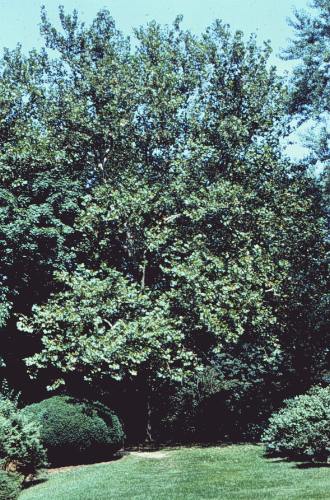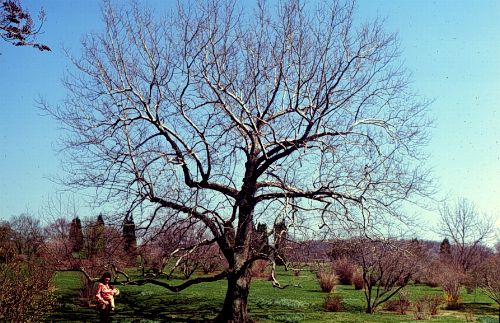Platanus occidentalis
Sycamore, American Planetree
Platanaceae
ExpandHabitat
- native to eastern half of United States
- hardy to zone 4
Habit and Form
- a large, deciduous tree
- pyramidal in youth
- broad, rounded crown when mature
- 75' to 90' tall
- 60' to 70' wide
- coarse texture
- rapid growth rate
Summer Foliage
- alternate leaf arrangement
- simple, deciduous leaves
- 3 to 5 lobed margins
- ovate leaf shape
- 6" to 10" long
- medium green leaf color
Autumn Foliage
- turning yellow-brown
Flowers
- monoecious, with separate male and female flowers
- deep red flowers
- blooms in late March
- not ornamentally important
Fruit
- rounded, tannish brown fruit
- 1" in diameter
- fuzzy looking
- found solitarily
- showy
- persist
Bark
- exfoliating bark
- low branched
- showy
- stout stems
- red to gray-brown color
- white inner bark
- zigzag stems
Culture
- moist, deep, rich well-drained soil
- full sun
- moderately salt and drought tolerant
Landscape Use
- lawn tree
- street tree when large spaces are available
- good for difficult growing sites
- good urban tree
- for shade
- for decoration from showy bark
Liabilities
- can be pollarded and pleached readily
- canker strains is a serious problem
- anthracnose
- cold injury in harsh winters
- powdery mildew
- American plum borer
- sycamore lacebug
- can lift sidewalks
- fruit can be a litter problem
- bacterial leaf scorch
ID Features
- no terminal bud
- buds are conical, 0.25" long, blunt pointed and dark reddish brown
- leaf scars completely surround the buds
- exfoliating bark
- has creamy white inner bark
- solitary fruits
Propagation
- by cuttings
- by seed
Cultivars/Varieties
'Howard' - The new foliage of this mutation emerges bright yellow, but fades as the summer progreses. A hard-to-find novelty.






